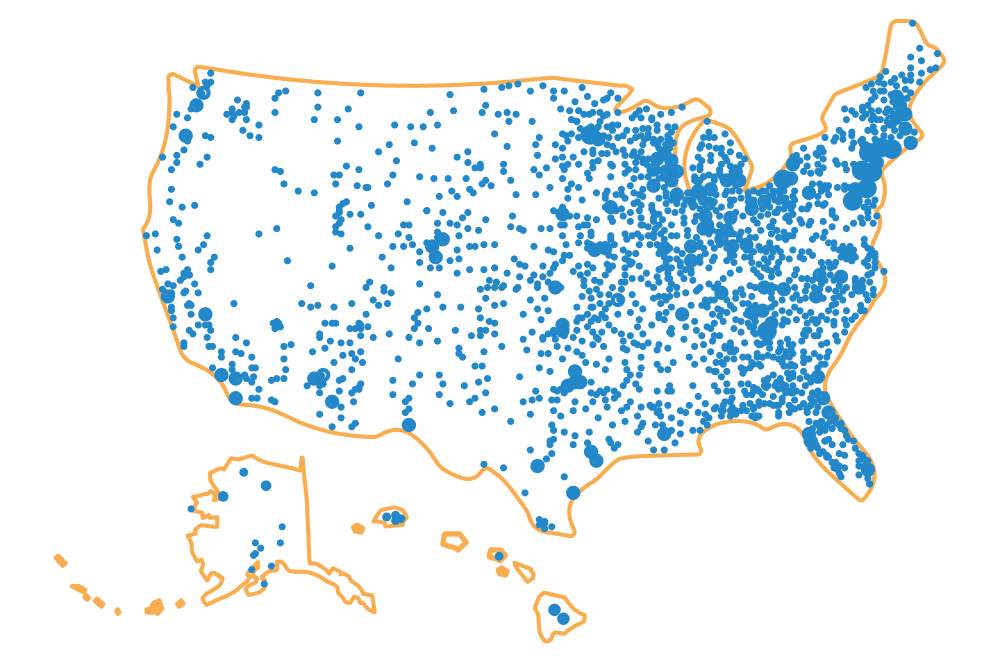Since the creation of 529 higher education savings accounts in 1996, the federal government has continually expanded the list of the tax-free qualified distributions for these accounts. One of the more recent 529 withdrawal distributions allows families to use 529 savings to pay for their children’s K-12 tuition at a public, private, or religious elementary or secondary school. This means your education saving account with Ohio’s 529 Plan, CollegeAdvantage, can cover certain costs for elementary, secondary, and post-secondary education.
There is a limit of $10,000 per year that can be withdrawn from a 529 account to pay for the K-12 tuition. If your child has more than one 529 plan, then the combined qualified distributions from all the 529 accounts for K-12 tuition is limited to $10,000 a year. Consult your qualified tax advisor for specific information.
So why save in a 529 for your child’s K-12 tuition? To take advantage of the tax benefits!
First, all earnings in a 529 account are tax-free. You can see how your 529 account can grow with compound interest and tax-free earnings. For Ohio’s 529 Plan, compound interest accumulates on the original contributions as well as any additional 529 contributions, any earnings from the 529 investment options, and any accrued interest. Therefore, every dollar saved is yours to use for education expenses.
Second, all 529 withdrawals for qualified expenses are also tax-free. This K-12 tuition qualified distribution adds to the flexibility of a 529 plan to cover many education costs. Other tax-free 529 withdrawals are:
- Tuition at a federally accredited higher education institute, including four-year college or university, two-year community college, trade or vocational school, apprenticeship approved by the U.S. Labor Department, or certificate program nationwide that accepts federal financial aid;
- room and board during any academic period in which the 529 beneficiary is enrolled for at least half of the full-time academic workload according to the eligible education institution. Room and board costs can also include rent for off-campus residency and groceries (non-taxable items only), provided these costs are equal or less than the same room and board allowances from the accredited education institution;
- mandatory fees;
- computer equipment and related technology as well as internet services;
- books, supplies and equipment related to enrollment and class schedule;
- certain expenses for a special-needs student. Consult with your tax advisor for any of these items;
- Qualified apprenticeships costs such as fees, textbooks, supplies, and equipment like required trade tools. The apprenticeship program must be registered with the Secretary of Labor’s National Apprenticeships Act in order to use a 529 plan withdrawal. Interested parties can check the U.S. Labor Department’s search tool to confirm that a program is registered, and therefore, eligible for a 529 withdrawal;
- Payment of the principal and interest on qualified education loans for the 529 beneficiary or the beneficiary’s siblings. The loan repayment provision applies to repayments up to $10,000 per beneficiary. The $10,000 is a lifetime amount, not an annual limit. If your child has more than one 529 plan, then the $10,000 lifetime limit is for all accounts combined; and
- Beginning Jan. 1, 2024, funds that remain in a 529 account after the beneficiary has completed their higher education can be rolled over to a Roth IRA for the same beneficiary. There are specific requirements that must to be met in order to use this tax-free qualified distribution.
Third, there’s a significant tax benefit for any Ohio resident who contributes to Ohio’s 529 Plan . Whether or not you are the 529 account owner, Ohio residents can deduct their contributions to Ohio’s 529 Plan from their taxable state income. The deduction amount is $4,000 per year, per beneficiary, with unlimited carry forward; Ohio is one of only three 529 Direct Plan programs nationally that offer this benefit. This means that the $4,000 is not a contribution cap for Ohioans. If an Ohio taxpayer contributes more than $4,000 in one year, they can continue to deduct $4,000 per year, per beneficiary, from their State of Ohio taxable income until all the 529 contributions have been deducted.
And there is another advantage to saving in Ohio’s 529 Plan for your children’s K-12 tuition. Any remaining 529 funds can then be used for their education after high school (the original intent behind 529 plans). Your Ohio 529 account can be used starting with your child’s elementary education all the way through graduate school and student loan debt. There are a variety of qualified uses for a 529 plan so you can continue to save in your child’s Ohio 529 account through their entire academic career and set them up for their professional career.
For more than 33 years, Ohio’s 529 Plan, CollegeAdvantage, has been helping families across the nation save for their children’s higher education. Ohio’s 529 Plan covers qualified costs at any four-year college or university, two-year community college, trade or vocational school, apprenticeship approved by the U.S. Labor Department, or certificate program nationwide that accepts federal financial aid. Learn, plan, and start for as little as $25 today at CollegeAdvantage.com.








